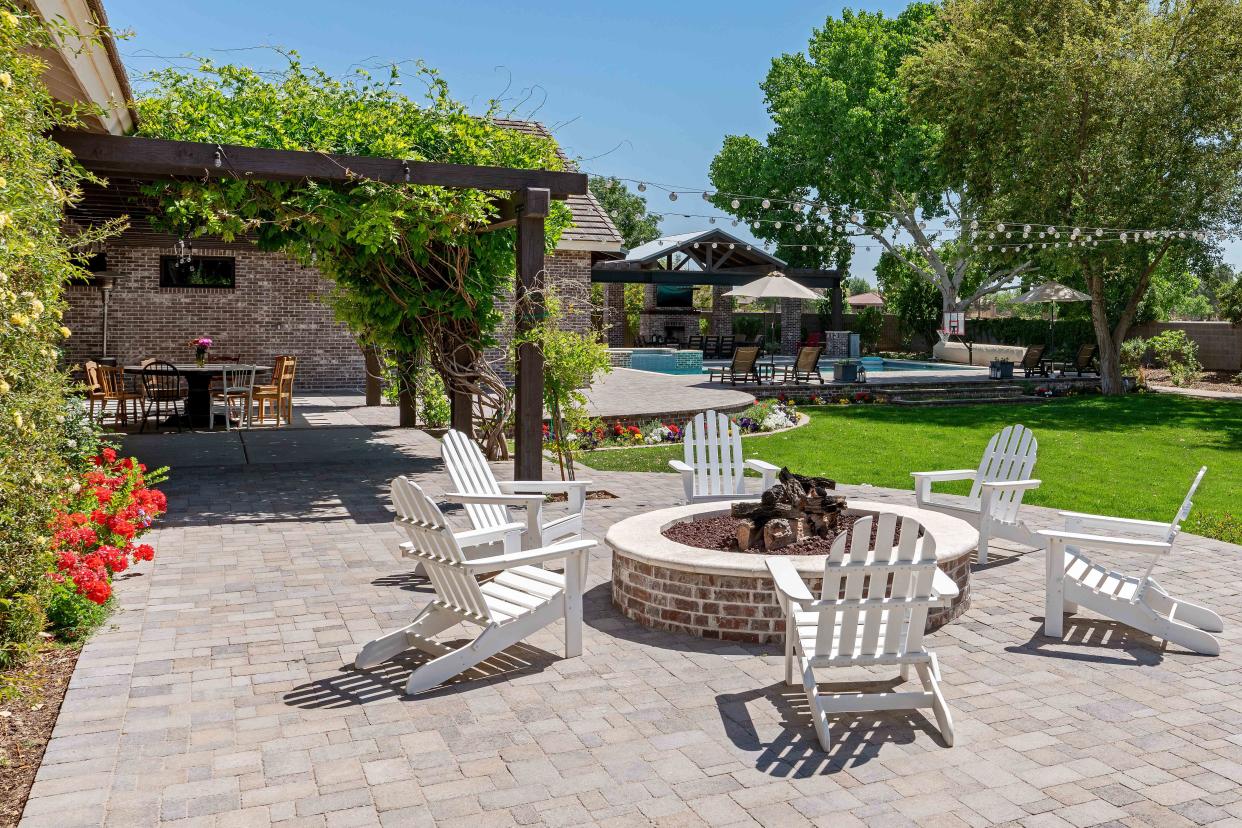What Is a Paver Patio? Plus, the Pros and Cons of Installing One
Find out if this type of patio is the right choice for you.

contrastaddict/Getty Images
Designated seating areas are a crucial part of building a functional and inviting backyard. Whether that seating area exists on a raised deck, a stone patio, or a concrete slab, however, depends on a number of factors, like space, yard layout, functional needs, and personal style. Paver patios, in particular, are a great option for people with flat yards who want something that's (generally) more affordable and easier to maintain than a deck. However, they're not a fit for everyone. So, keep reading to learn more about paver patios, the pros and cons, and whether or not you should consider one for your yard.
What Is a Paver Patio?
Before explaining exactly what a paver patio is, it's helpful to know the basic definition of a patio. While there are several different types, a patio is a paved area built directly on the ground, which can be situated anywhere in a yard. This distinguishes patios from decks, which are structures that are typically attached to the house and can be built at various levels on or off the ground.
Patios can be built with concrete slabs, bricks, tile, and more. Paver patios, specifically, are patios made from paving stones. These stones are man made—creating more uniformity and facilitating easier installation—and they can be made from a variety of materials, including concrete, natural stone, clay, or porcelain. Pavers are typically installed in an interlocking pattern using polymeric sand to fill and secure the joints between the stones.
Pros of a Paver Patio
Durability: Paver patios are durable by design. The many interlocking stones and joints in between them work together to create a flexible and strong pavement system. Compared to concrete patios, paver patios are much more resistant to cracks. This also makes paver patios a more reliable option for withstanding seasonal changes. For example, in winter months, when the ground freezes—causing it to expand and contract—this can lead to cracks in solid, continuous surfaces, but the seams throughout paver patios allows the stones to move and adjust without breaking.
Maintenance: Paver patios are generally pretty low maintenance and don't require much upkeep, compared to decks or concrete patios. This is largely due to the fact that the risk of cracks and breaks is much lower with paver patios. They also don't require repeat staining, like decks, and they don't require as frequent of sealing as concrete patios. Plus, since paver patios are made up of several pieces, it's easier to "spot treat" or repair the patio, one paver at a time, as needed, rather than having to remove or replace the entire patio.
Customizability: Paver patios are highly customizable based on your style preferences. You can choose the paver material, size, shape, color, and the pavement pattern.
Cons of a Paver Patio
Installation: When compared to a concrete patio, which can be poured all at once, paver patios require a lengthier and more laborious installation. Since the pavers have to be placed one by one, installing them takes a lot longer than it takes to pour a single slab of concrete. However, it's worth noting that paver patios are ready to walk on and use pretty much immediately after installation, while concrete patios require drying time.
Cost: Because paver patios are more laborious to install than concrete patios, for example, this leads to higher project costs. In addition to the extra steps and hours of work that will raise the price when hiring contractors, paver patios generally require more building materials than concrete patios, too. However, the project is DIY-able, if you're willing to put in the work and want to save money.
Weeds: The seams in between pavers are a pro in most cases, making the patios more durable and resistant to seasonal changes. However, the sand in between the joints can wear away over time, offering opportunity for weeds to grow up in between the stones. When the patios are properly installed and maintained, you can prevent most weed growth, but the potential for this annoyance is still there. You can also fix the issue when it arises, removing the weeds and refilling the joints with new sand.
Should You Install a Paver Patio?
If you're looking for the easiest and most affordable option upfront, a paver patio may not be the choice for you. However, if you're willing to pay a bit more and don't mind some more intensive installation (whether hired out or DIY'd), paver patios can pay off over time with their durability and easy maintenance.
Your existing yard may also determine whether or not you should put in a paver patio. Paver patios require flat surfaces so they can be evenly laid, without any stones jutting out and creating a trip hazard. So, if your yard is more uneven, you may be better off considering a deck or a different type of patio instead.
Related: 10 Charming Patio Ideas to Elevate Your Backyard
For more Real Simple news, make sure to sign up for our newsletter!
Read the original article on Real Simple.
